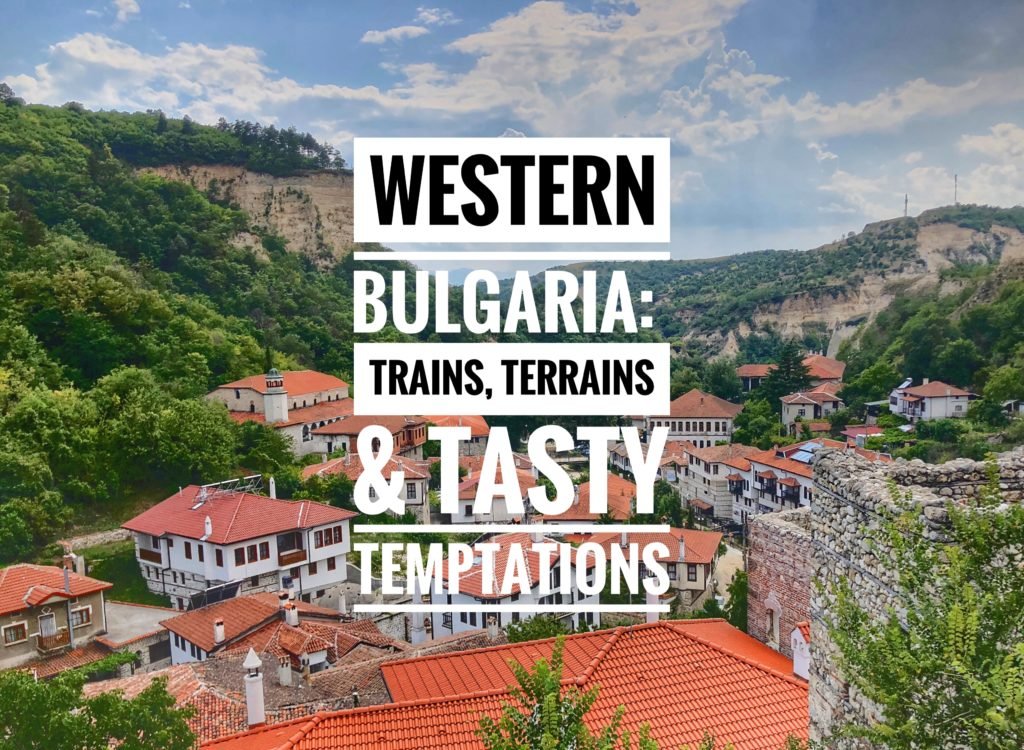
Our $50/day budget was a complete breeze in Bulgaria…truly a budget backpacker’s dream. We entered this penny-pinching utopia for the second time in late July. Last time…November…bitterly cold and snowing. This time… brilliantly sunny and warm. The language and swooping Cyrillic letters, once completely daunting, was significantly easier to read, the train system even more manageable to navigate and the people still equally warm and helpful. It was familiar. It was safe. Obviously inexpensive. Yes, it’s got a hell of a lot of pros. It’s a country that has been, and remains on our top five list.
In all, we spent nearly six weeks in Bulgaria, from the idyllic Rila mountains of the far west, to the rolling central Balkan Mountains, to the Black Sea coast to the banks of the Danube. And the best part? We’ve hardly made a dent in all this country has to offer.
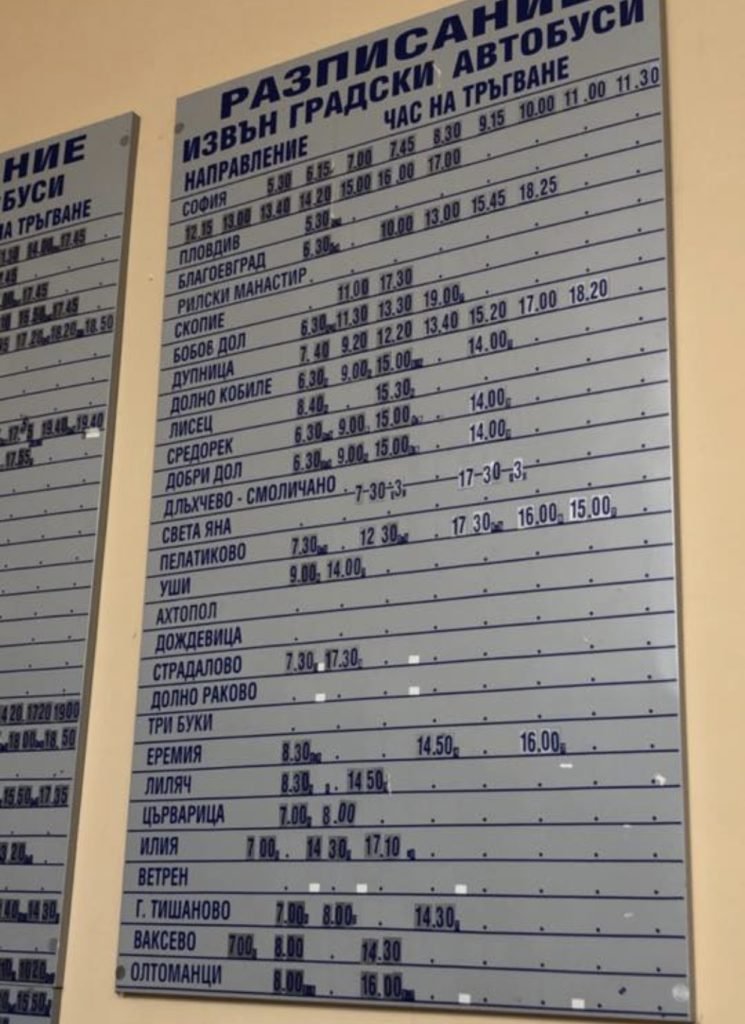
At the far western Bulgaria border town of Kyustendil, which we arrived to by bus from Skopje, Macedonia, we were greeted with only this departure board…no Latin letters or anyone to direct us anywhere. Fortunately, Mandy had previously learned Cyrillic so we managed to make it to our next town with no issues. It’s interesting, we’ve become quite the team at Bulgarian. Mandy sounds out the letters and then Greg uses his knowledge of Slavic languages to try and interpret what she’s reading. So, maybe this language could in fact be possible?? As long as we intend to be Siamese twins and never leave each other’s side ?
After a long day of travel, we arrived to our place in Blagoevgrad, a western Bulgarian town known for its American University. For $17 a night we got a giant place with kitchen, living room, bed and bath. Granted, the jumbled collection of furniture looked a bit like what you might find in a frat boy’s first college apartment, complete with pressboard furniture, missing chair backs, and miscellaneous table space for sketchy activities.

The next day we headed to the UNESCO world heritage site of Rila Monastery. To be honest, we thought we were churched out…until we arrived at this iconic masterpiece founded in 927 AD. This place is genuinely mesmerizing…a palate of colors explode on every surface and apocalyptic frescoes dance on the ceilings, all embraced by forested mountains. To get there, we took the first bus at 7 am from Blagoevgrad to Rila Village and returned on the first bus back at 3:30 pm. (16 Bulgarian Lev total/$9) A long, but peaceful day at the monastery, which gave us a chance to grab a hike, a beer and a snooze. Next time we’ll stay the night in the monk’s dorms or send a postcard in their onsite post office!
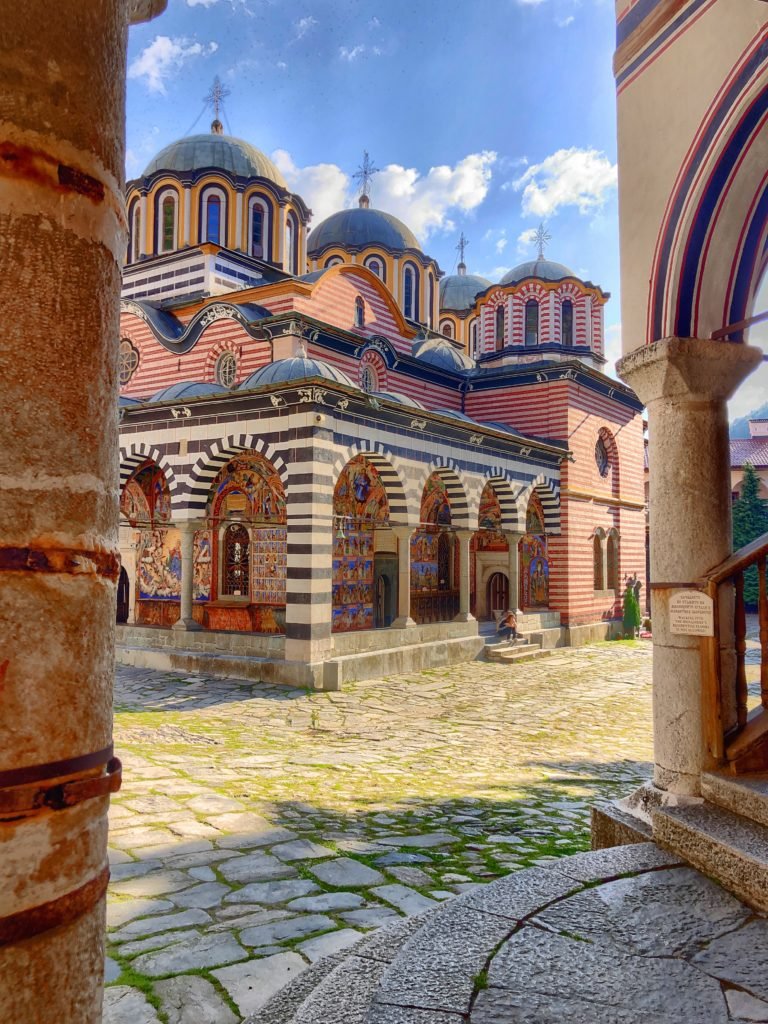
Rila Monastery was founded in the 10th century by the hermit St. Ivan of Rila. He actually lived in a cave without any material possessions not far from the monastery’s location. His students built the complex when they came to the mountains to recieve their education.
The present look of Rila Monastery dates back to 19th century. The beautiful main church in the middle was erected in 1834 – 1838. The frescoes inside were created by the most famous and talented Bulgarian artists at the time. The last 100 years have not been easy on the monastery. Under communist rule, the monks were evacuated and the site was turned into a museum.
It would be easy to study these frescos for hours and not notice everything buried within the images. The Bulgarian Orthodox Church paints gold circles around the heads of Jesus, Virgin Mary and the Saints, and to differentiate, God has a golden triangle. Also interesting, some of the images are in comic strip form… terrifying images which read from left to right, top to bottom, telling a story. (Pictures 2 & 3 on left.) Apparently these depict what happens to a child when he or she sins with most of them involving the devil. Nice comic strip.
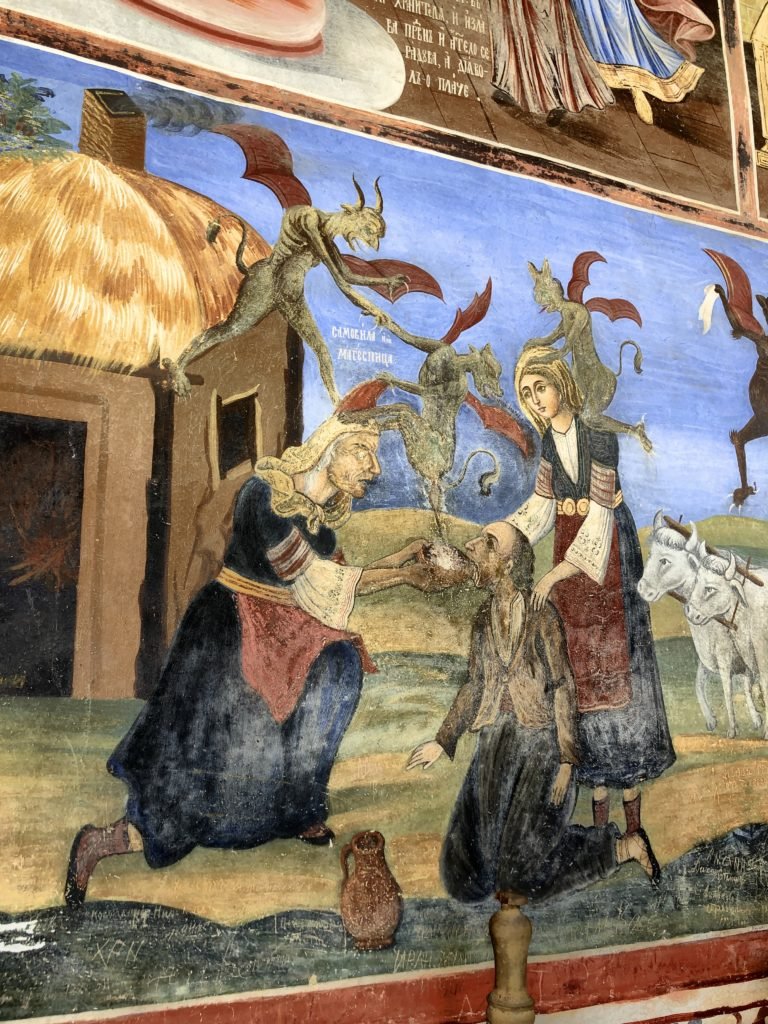
Some of them are quite apocalyptic and disconcerting. Note the image of this demon defecating in this sinner’s mouth while another gives a head massage to this saintly couple. Guess this takes your mom’s “washing your potty mouth with soap” to a whole new level.
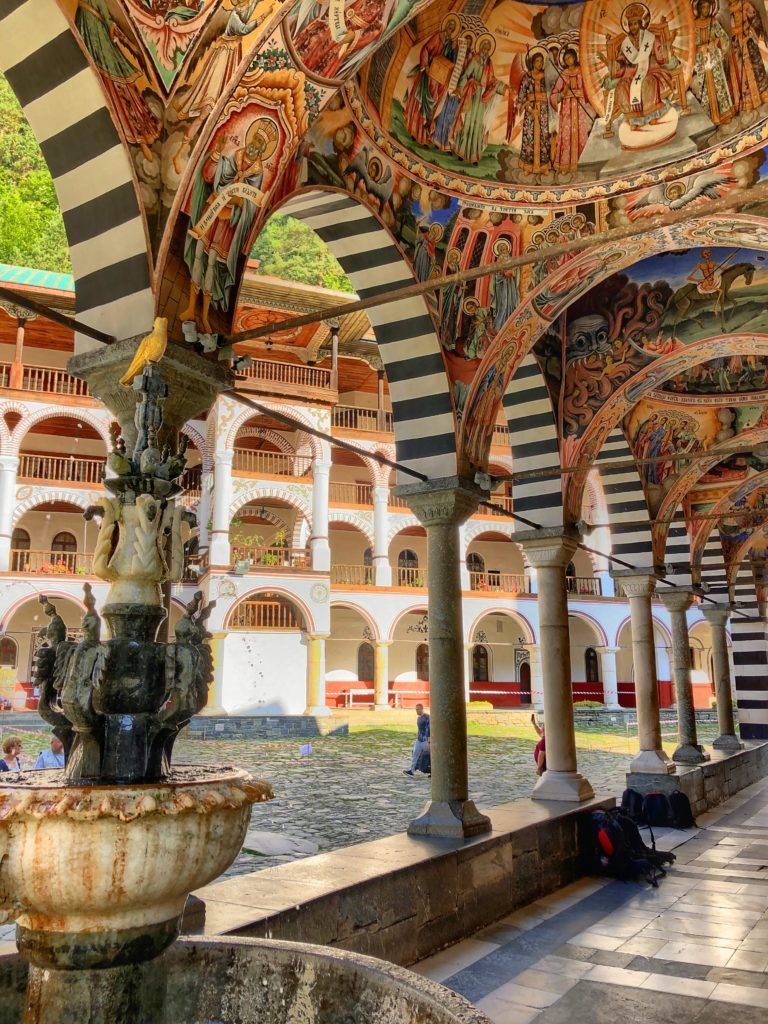
Although it was forbidden to take pictures inside the monastery, it was just as stunning as the outside. King Boris III, the last king of Bulgaria, is notably buried here. He is most famous for saving all 50,000 Jews in Bulgaria during World War II. Bulgaria actually aligned itself (reluctantly) with Germany during the war, but there was such a protest by everyone that the king stalled the deportation and saved them. He died shortly after returning to Bulgaria following a visit with Hitler where old Adolf scolded him sternly for not deporting the Jews. Although his death was said to be a heart attack, many believed he was poisoned by the Fuhrer. He is certainly a noble character who deserves to be remembered in history (the former, not the latter!)
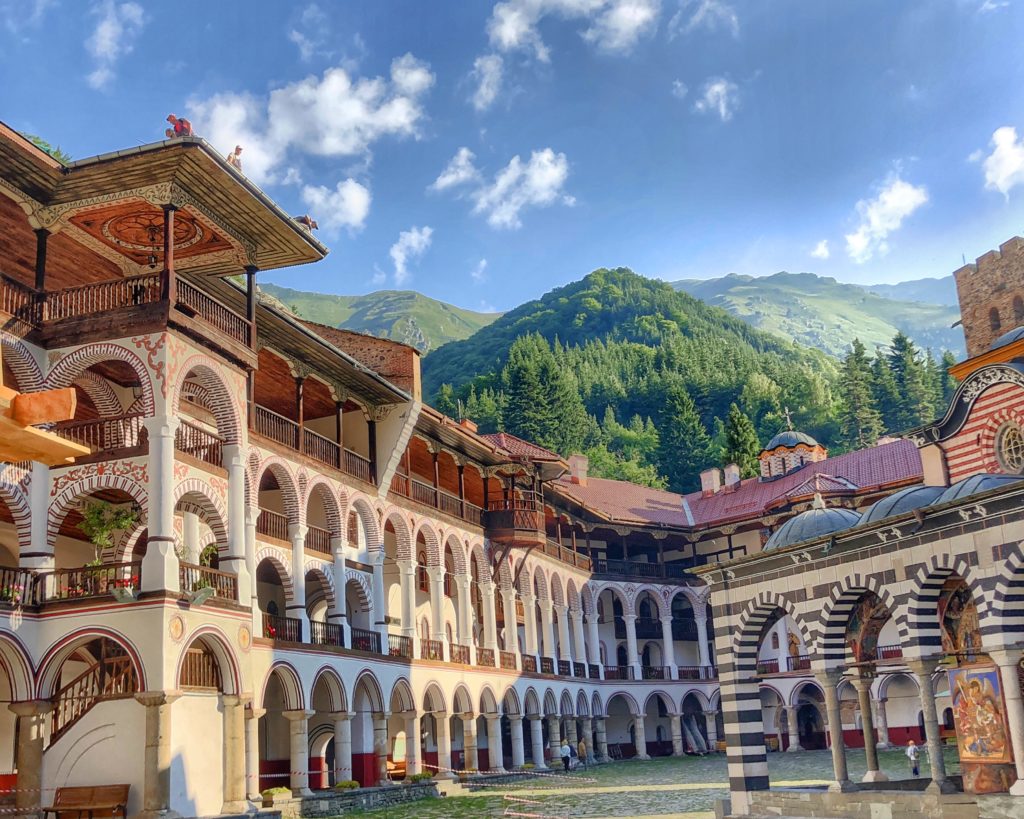
The monk’s dorms surround the monastery. Unfortunately you’re not able to explore this part unless you stay the night. We will definitely do this if we ever go back.
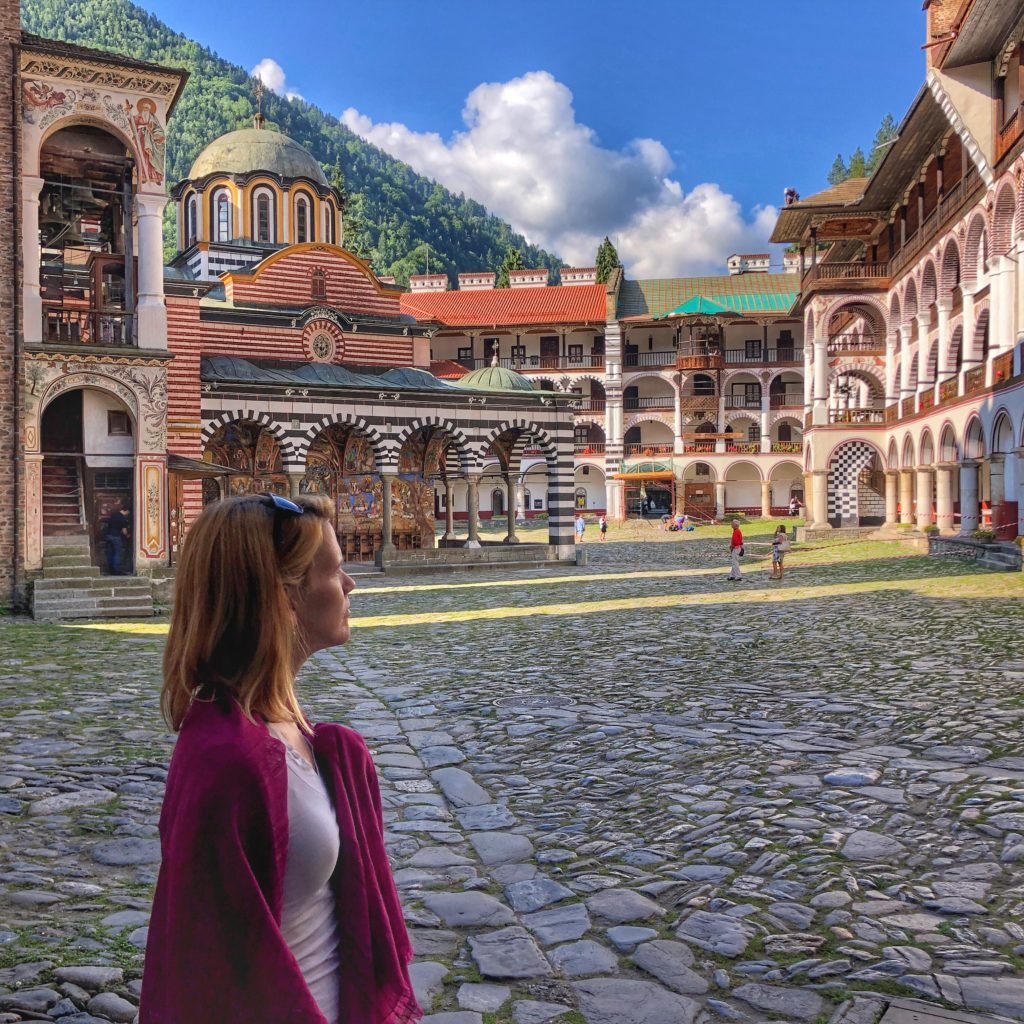
Mandy pauses and reflects on this stunning place.

OMG. The produce in Bulgaria is some of the best we’ve witnessed. Super fresh and tasty, naturally organic and ridiculously cheap. A whole bag will set you back $5. Another product worth buying is the mouthwatering and rock-bottomed price honey and any products made of roses. Mmm…
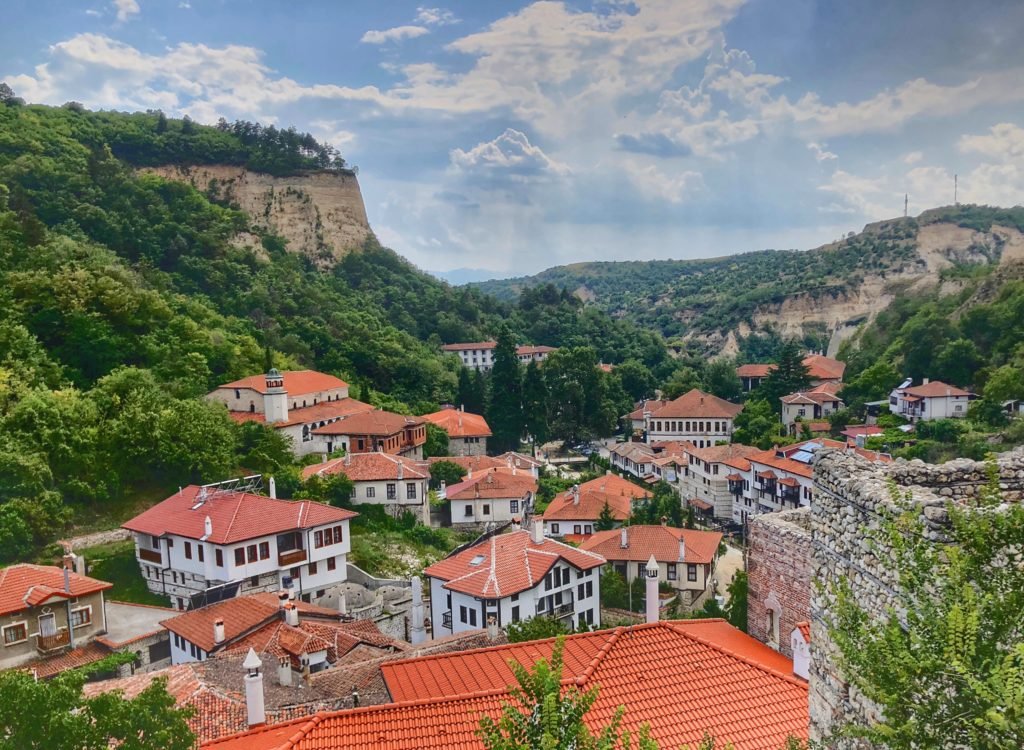
The next day, we headed toward the teacup-sized architectural stunner of Melnik by public transportation, which was no easy feat. Just 20k from the Greek border, and 80k from our base town of Blagoevgrad, it seemed like a easy day trip. However, due to available buses/trains and a long stopover in Sandanski we didn’t end up arriving til 16:00 when the last bus left at 17:10. Talk about packing it in! Still, it was worth it to see the gorgeous sandstone pyramids that ring the village, and take a quick part in its 600-year-old wine culture with a quick taste and two delectable bottles for around $5.
Above is the best view we got during our whirlwind tour. All buildings have been renovated in “Bulgarian National Revival,” style, but are heavily influenced by the Byzantine-style. We had hoped to do a long hike in the cliffs. They’re said to look like “wizard hats” once you get back into them. Next time!
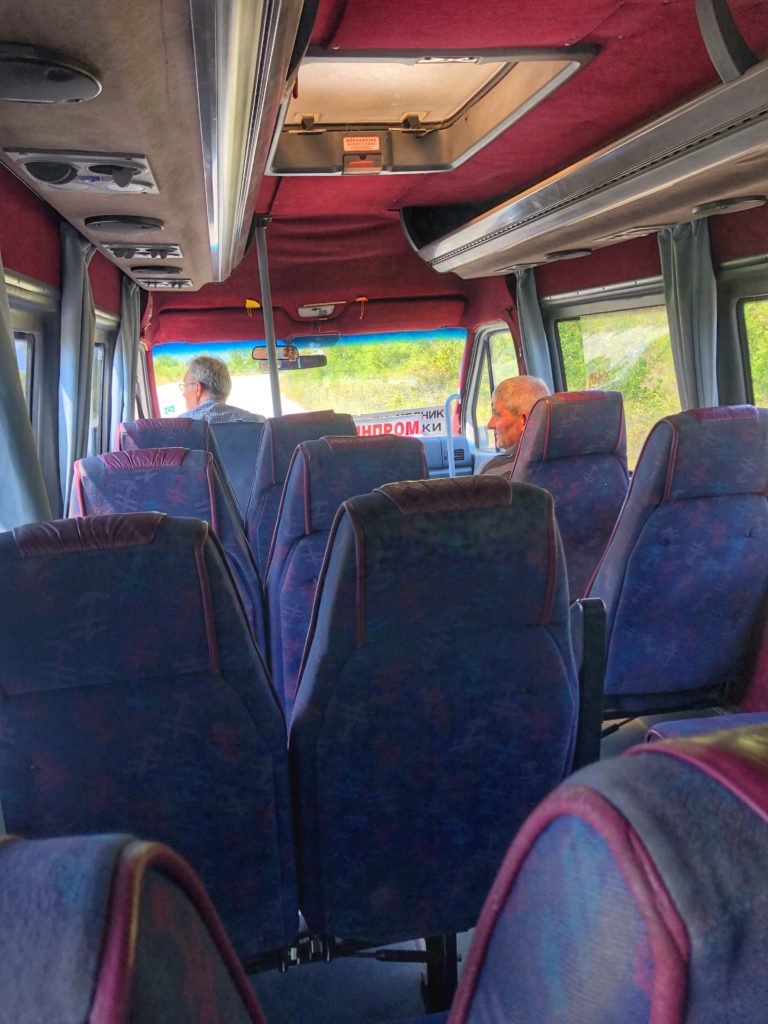
Naturally the 16:00 bus getting out there was virtually empty. Kinda easy to see why most people flock here on tourist buses or by hitchhiking!
Three, two, one…go! You’ve got an hour to explore Melnik! It’s a stunner of a town that undoubtedly deserves more time and we were bummed with the lightening fast tour (but still glad we did it!) This town now has 325 residents but less than a century ago, when it was part of Greece had 10,000. After the war, when it became part of Bulgaria, all the Greeks moved to Greece and left it with few residents.
The town is an architectural reserve and 96 of its buildings are cultural monuments, all which seem to ooze cuteness.
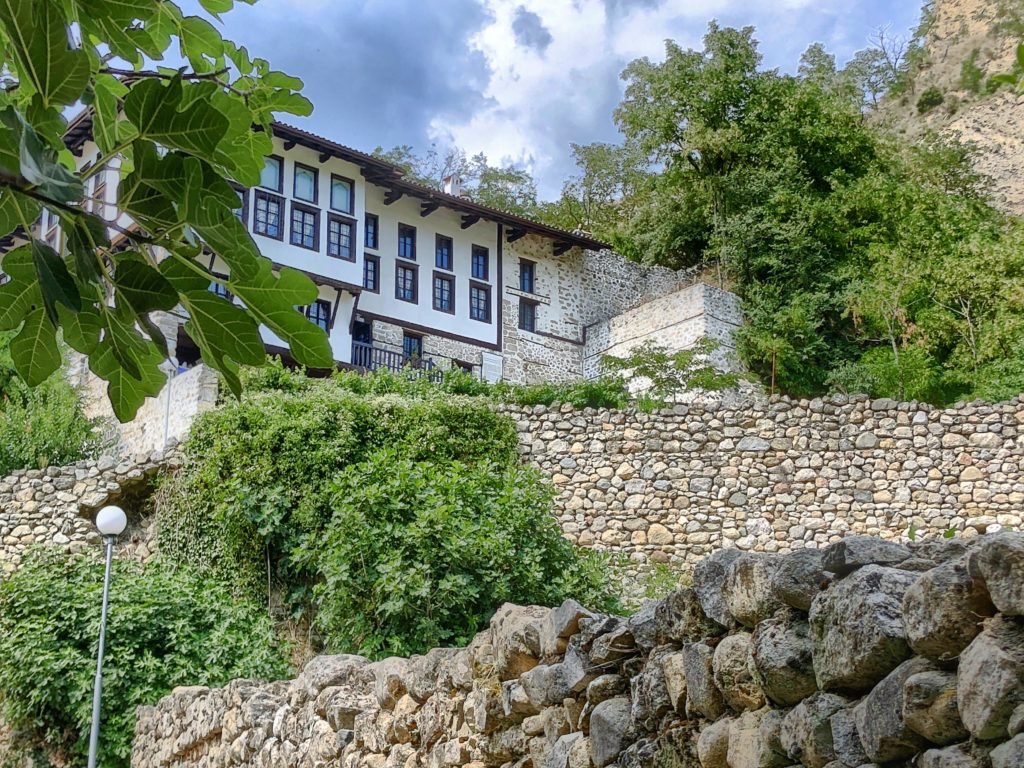
The Kordopulov House from 1754 has the largest wine cellar in Melnik. You could easily spend the day touring cellars here. We budgeted ourselves three minutes for the outside.
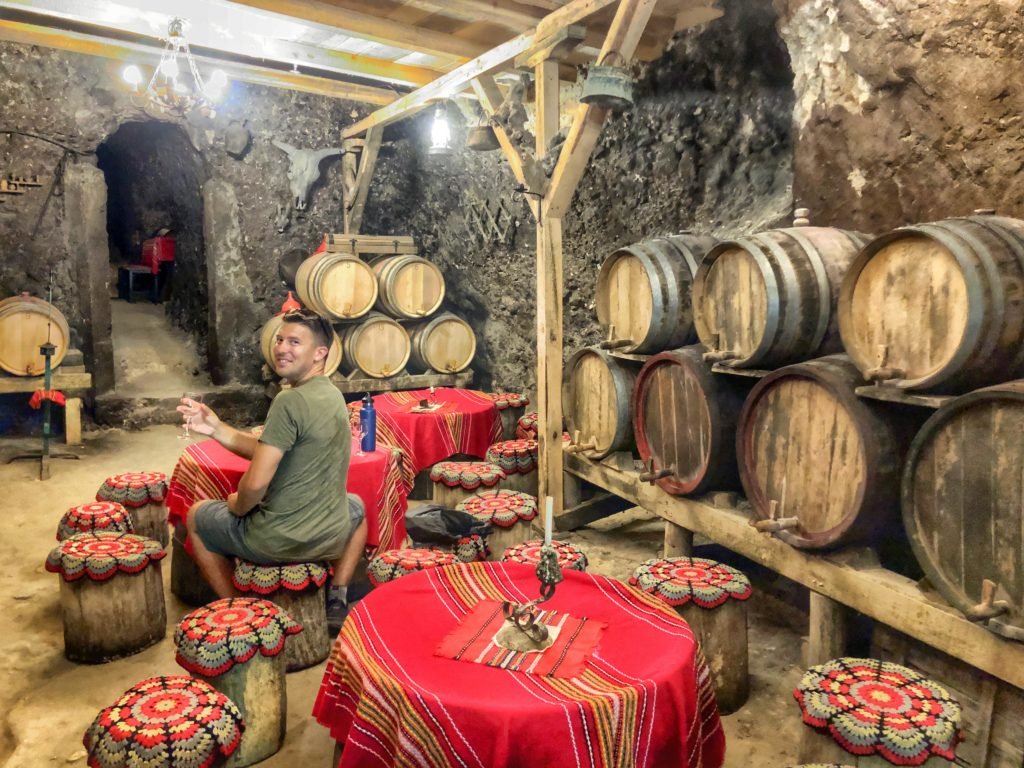
Grabbing a tasting in one of the 262-year-old cellars. Very difficult to make a decision on a bottle, but we settled on a refreshing Rosé which had some melon notes and a rare red called Shiroka, from a locally-sourced Melnik grape. According to Wikipedia, the local wine from the varietal “Broad Leave Melnik Vine” was reportedly a favourite of Winston Churchill’s.
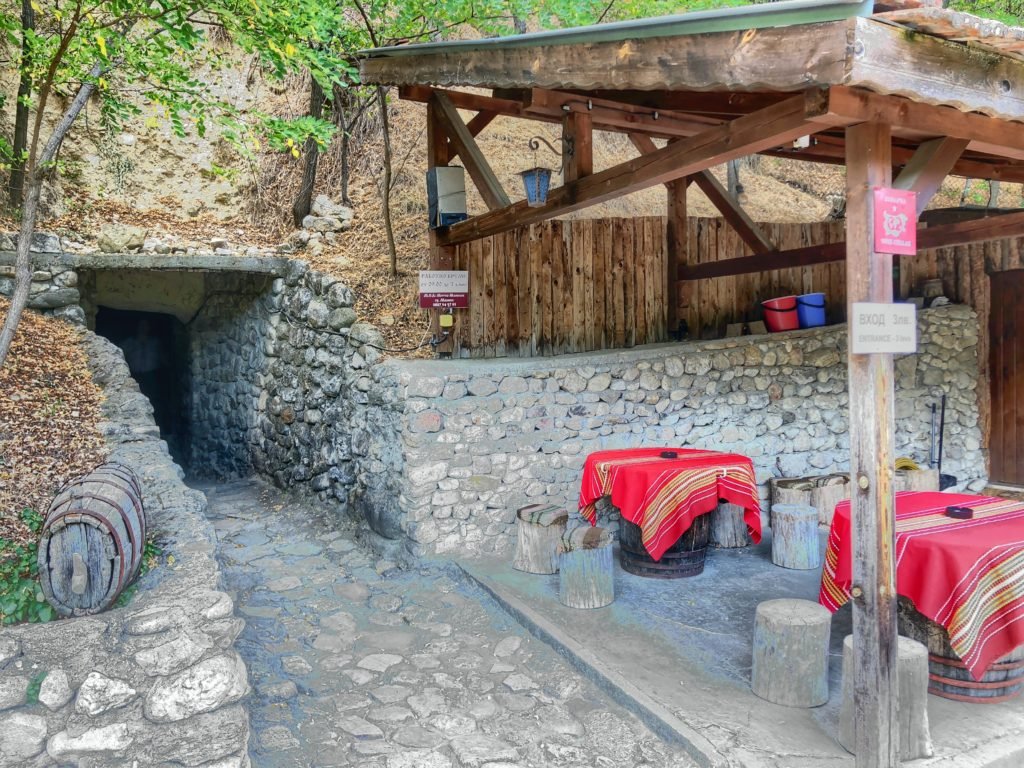
The entrance to the cellar. A little natural air conditioner just when we needed it most!
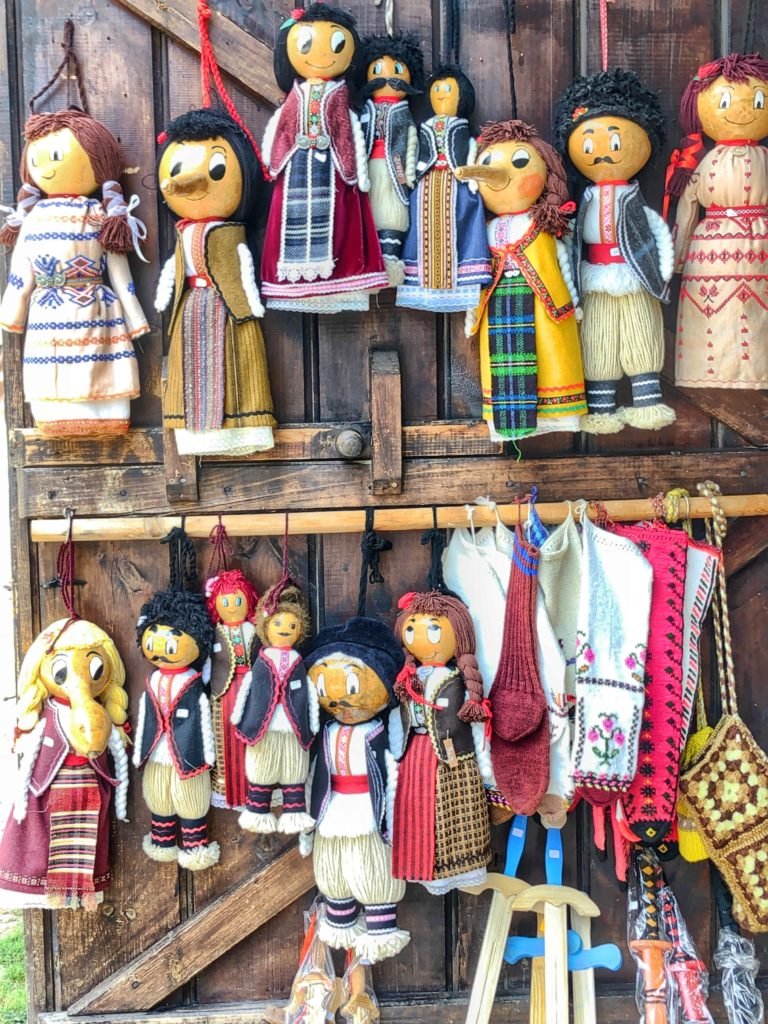
In a wine haze, you might even take one of these home!
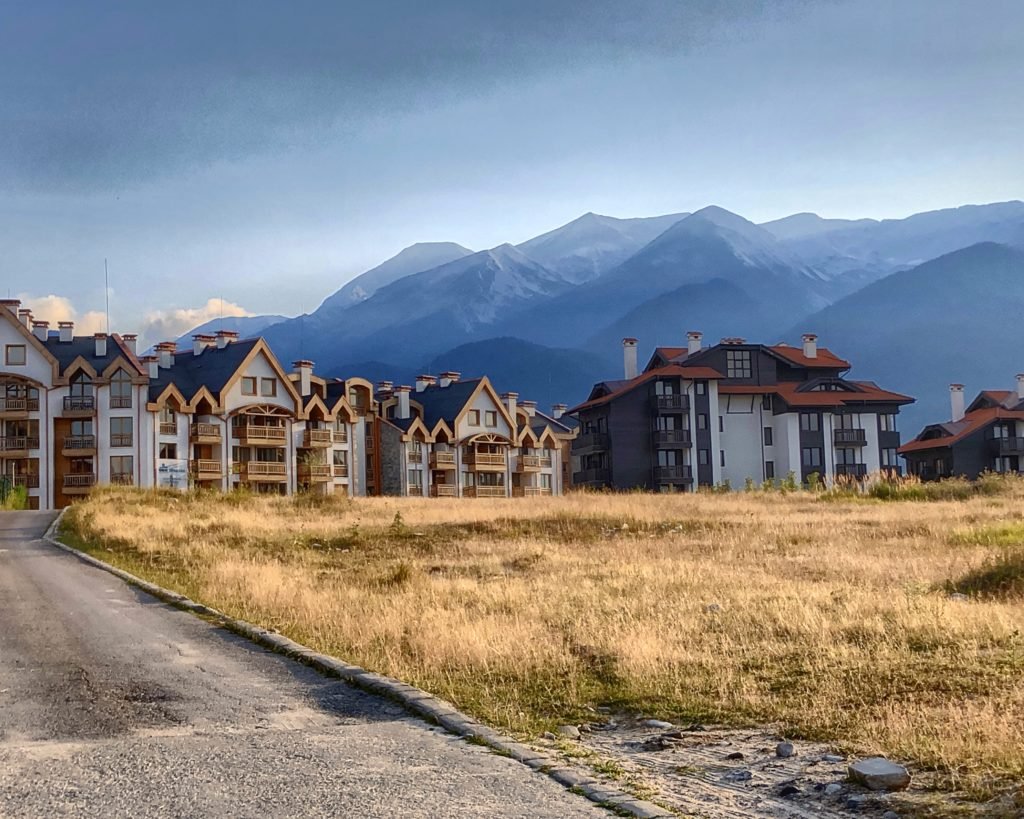
From Blagoevgrad, we took the train to Bansko, a ski resort town tucked in Bulgaria’s Pirin Mountains at 1200 meters (3900’.) The town had a huge volume of empty ski resorts and apartments, seemingly holding their breath until the onslaught of skiers and snowboarders arrive for the winter. We couldn’t believe how many there were! In the summer months, the town is virtually empty with only a few hikers and tourists. Our full apartment in Bansko set us back a mere $16.50 a night. It was the ideal time to be there in our opinion!
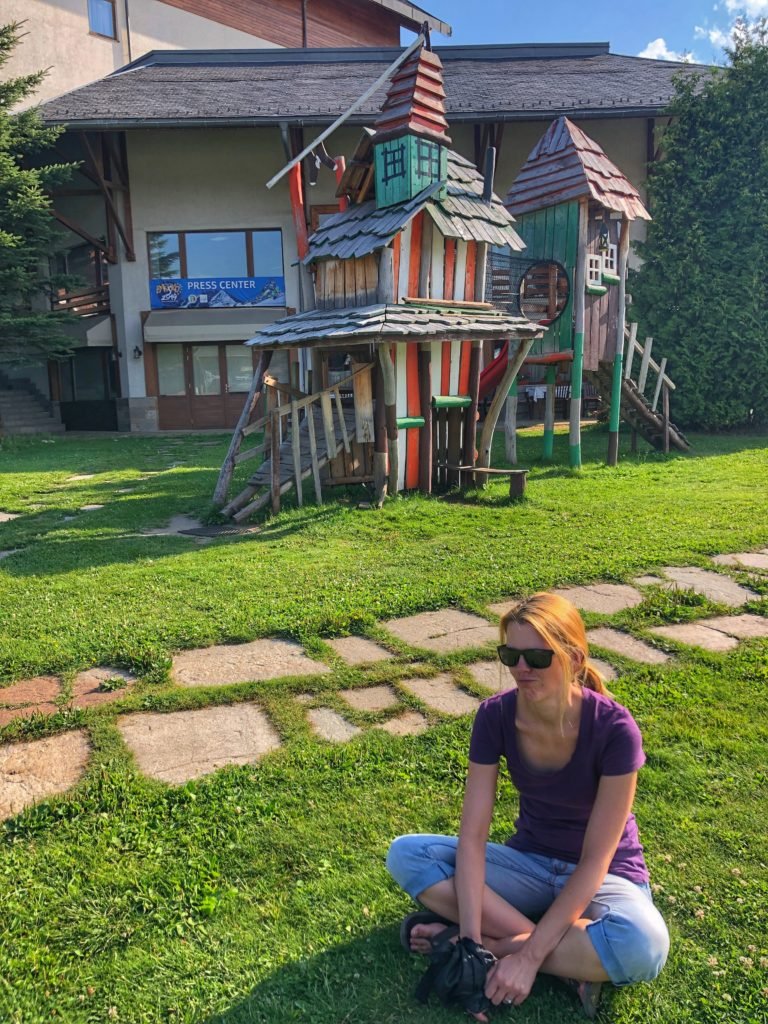
Unfortunately due to short time, heat and mostly, being exhausted, we opted not to do any major hiking in the area. (This was a mistake looking back because it’s absolutely incredible here.) Instead, Mandy tried to play on this whimsical little playground and whacked her head on the slide. Being that she suffered a bad head blow a couple years ago, this normally really upsets her, but this time she just moderately sulked.
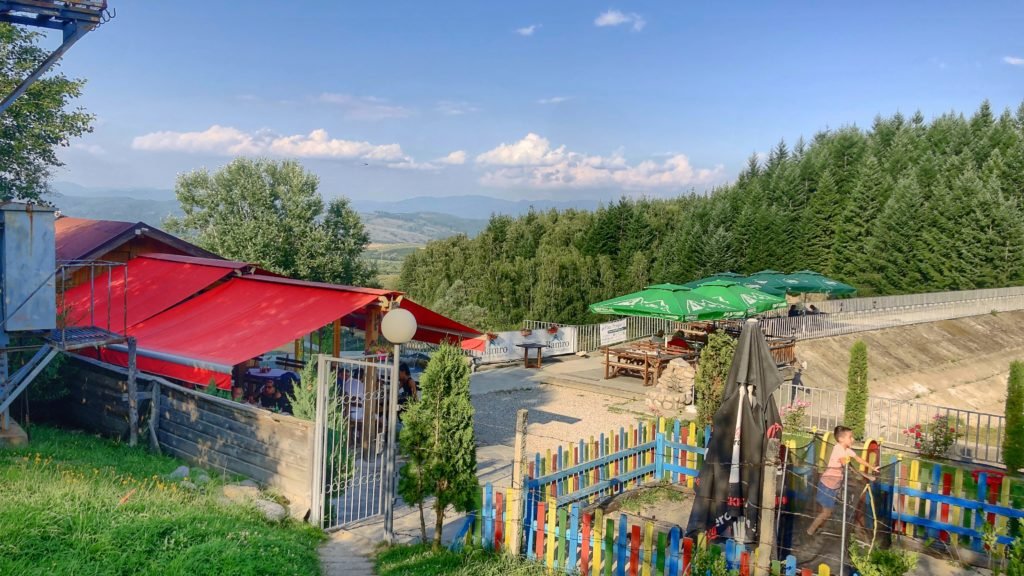
This is the first time on our trip we’ve also returned to a restaurant, Restaurant Iazovir Krinetz. Mostly known by locals and tucked back on a pretty lake, we gorged!! The menu was even in English and the setting was beautiful.
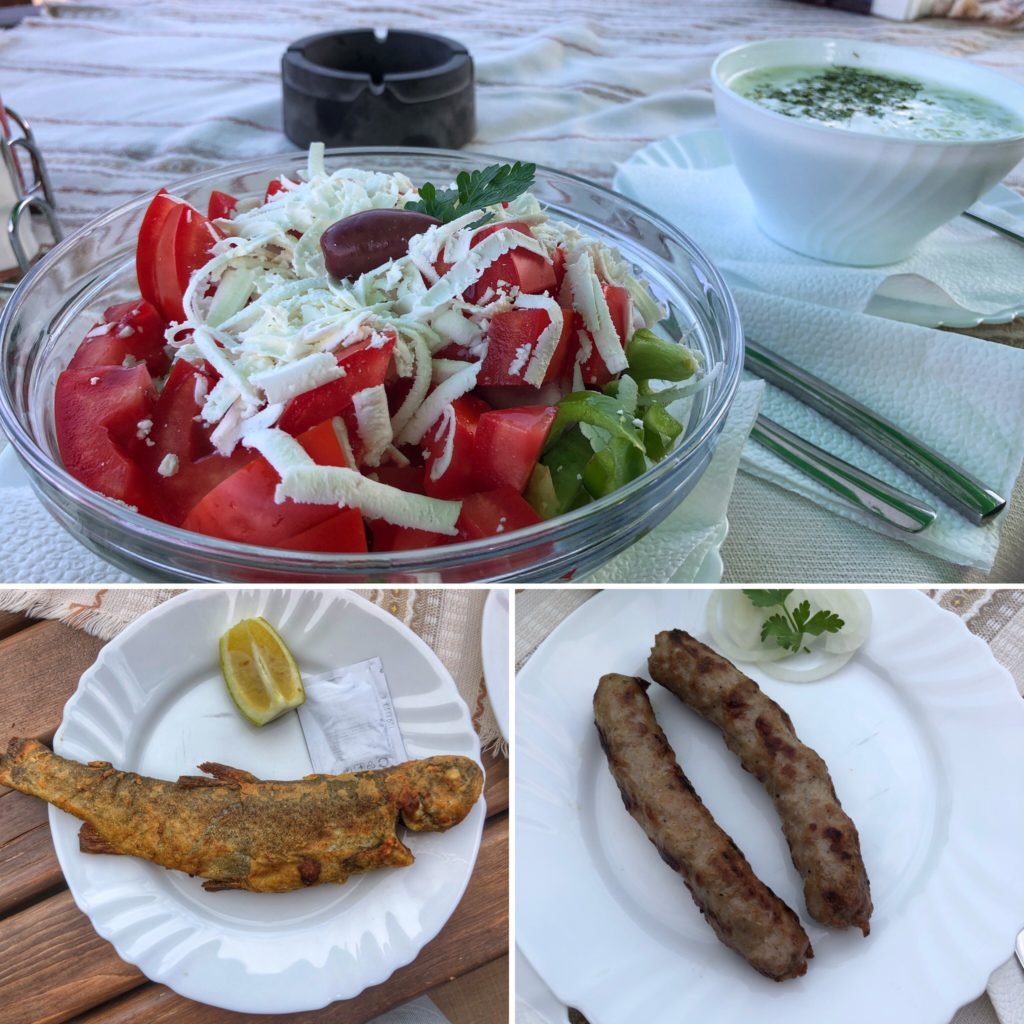
But the food of course, is why we returned. We spent $11 on two delicious entrees, two salads, soup, two beers and tip. Yes. We love this country. You’re giving Albania a run for its money.

Walking through the village, we stumbled upon a quite intriguing contraption. Plunging water in a wooden/stone aqueduct leading to a giant swirling wooden basin. It reminded us of those toilet rides at water parks that whirl and flush children out of the bottom. Upon further observation it seems to be a community washing machine that you can soap, swirl, smack and wring your clothing into. Our current place didn’t have a washing machine so it was a little tempting to really dive into local life.
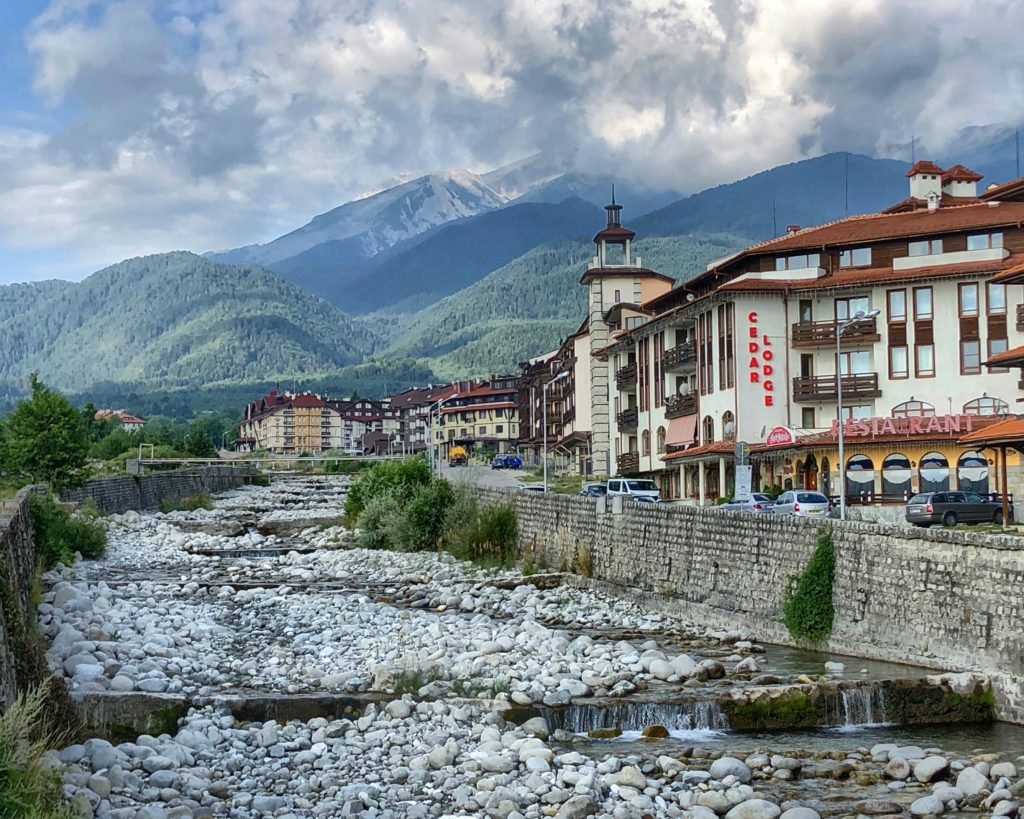
The beautiful cloud covered Pirin Mountains. Another excuse we used not to hike. Ugh. We’re lame. ?

Roaming the desolate streets of Bansko was simply lovely. Everything was in full bloom and the trees were bursting with delicious fruit.
More Bansko street scenes.
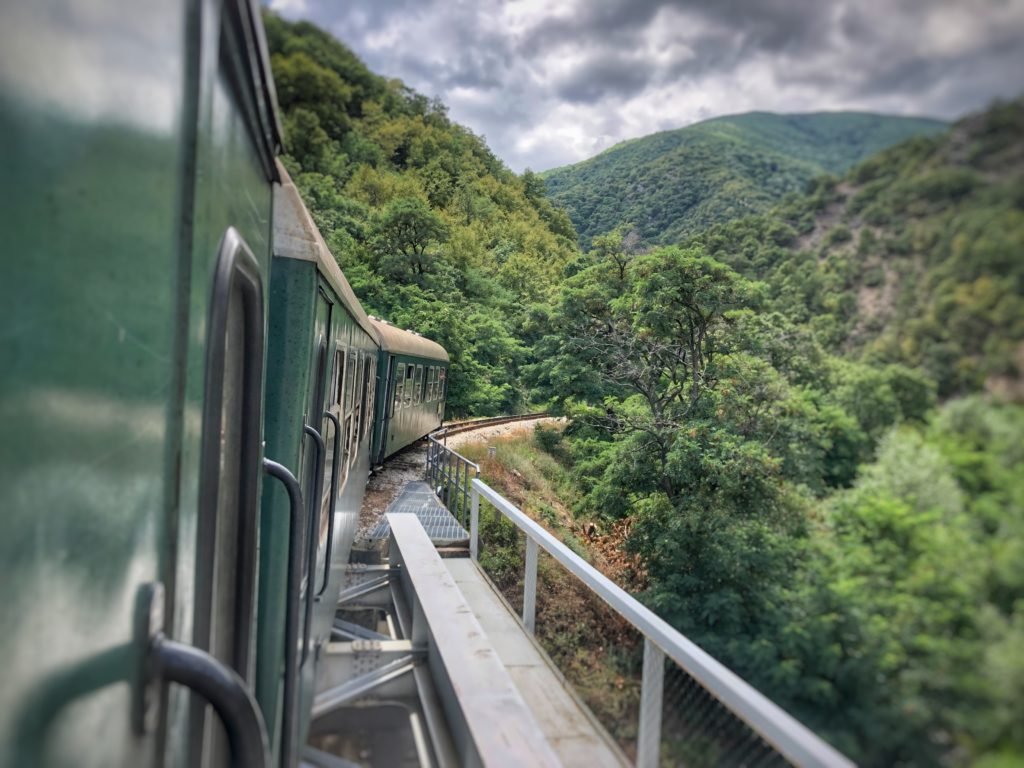
Wrapping up Bansko, we took the narrow gauge rail train from Bansko to Plovdiv. A five-hour beautiful journey through the mountains cost $3.50/ticket. It was well worth it!
Our favorite part was standing between the carriages which was open and exposed to the world. Witnessing the track and earth pass beneath you brings an indescribable feeling of freedom. Love it!
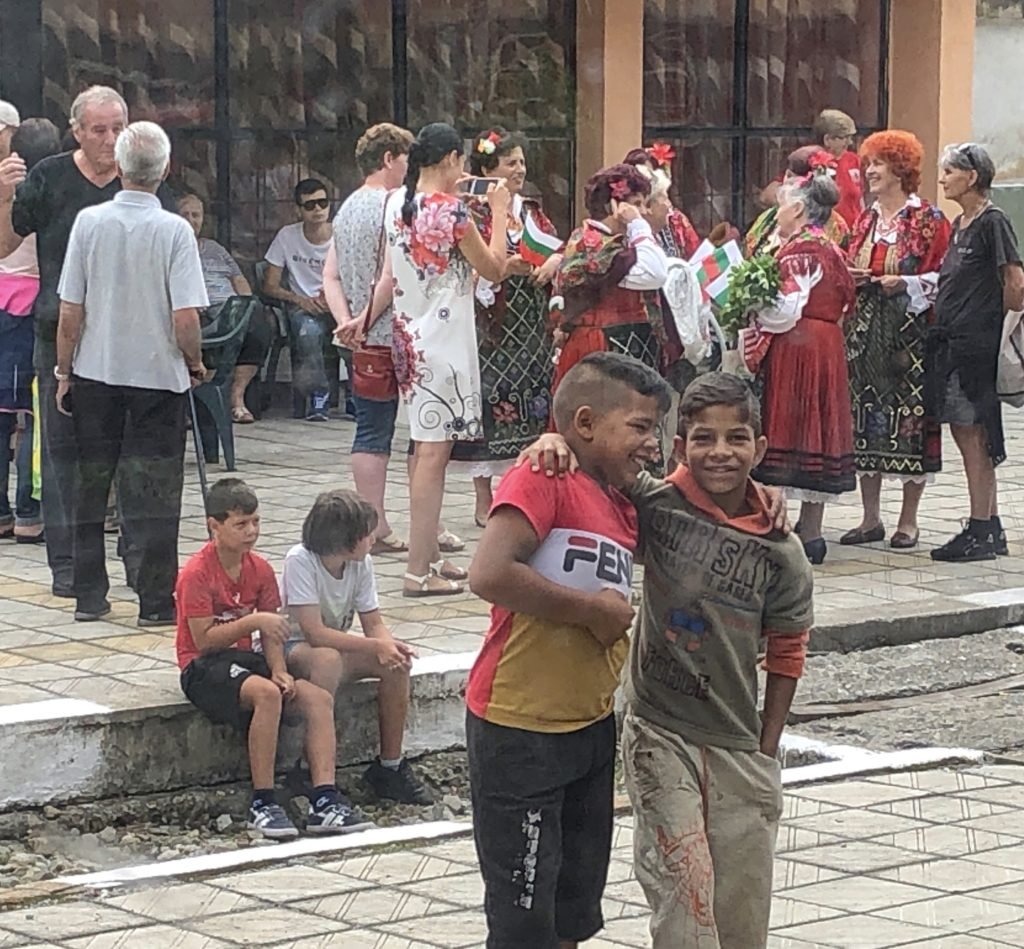
We loved seeing these grinning Roma kids at the train station. Unfortunately these smiles are not always common. Europe’s biggest minority group, the Roma people (NOT gypsies…this is derogatory) are said to have originated from Northern India 1500 years ago and now equal more than 12 million, mostly in Europe and the Americas. Many Romani still face persecution and discrimination, and are denied rights and services in the countries where they live. After the Jews, they were the biggest group murdered during the Holocaust. They have their own dialects of a common language, consider themselves nationless and pass their traditions along orally. Many cannot read or write.
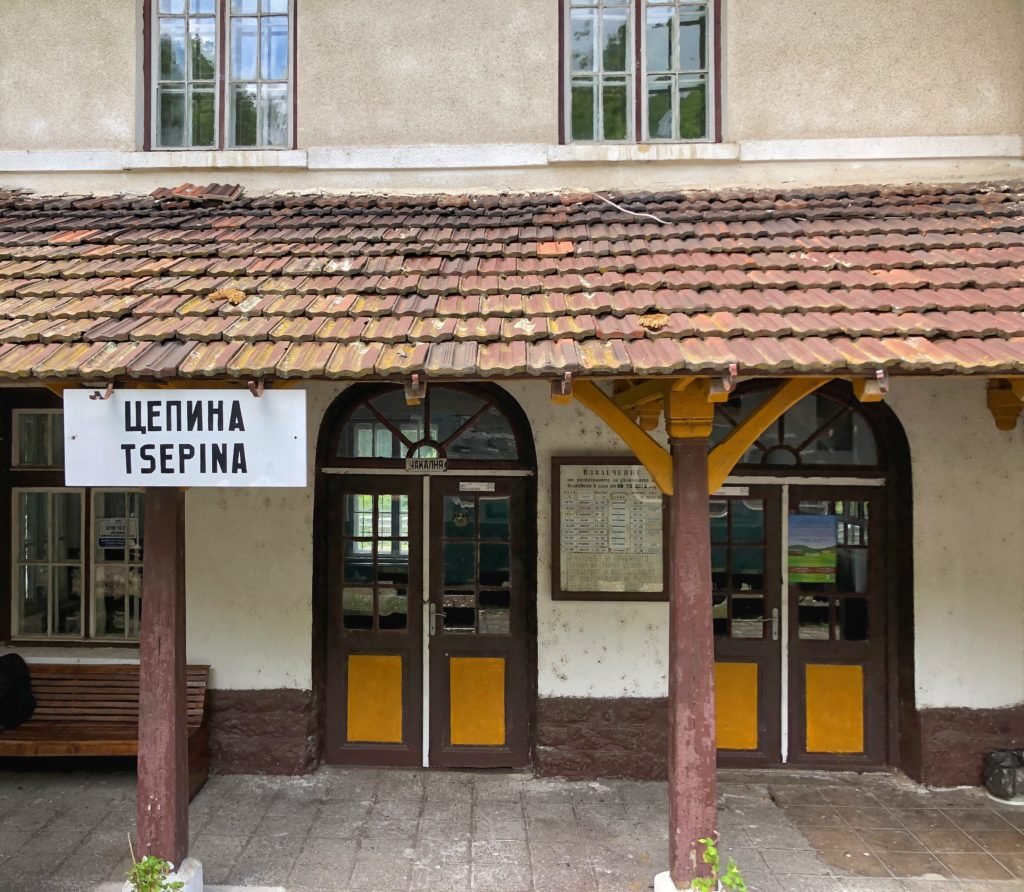
Because the train we rode was narrow gauge, everything seems miniature…the tracks, the train and the stations. So cute!
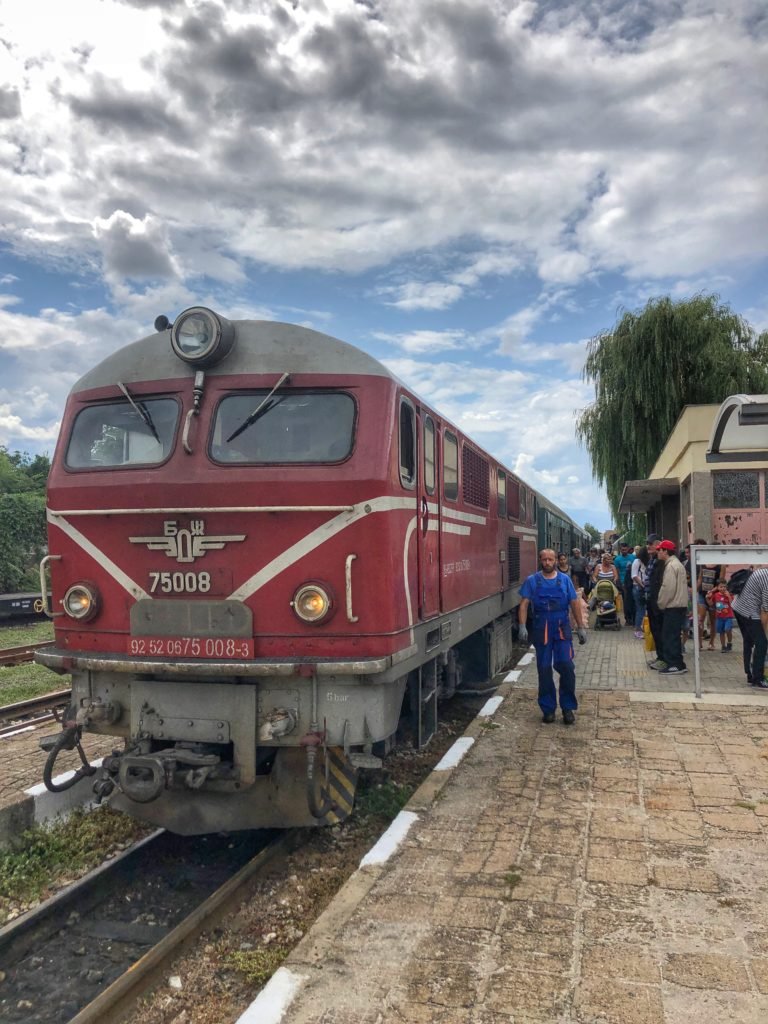
What a way to travel! Welcome to Central Bulgaria.

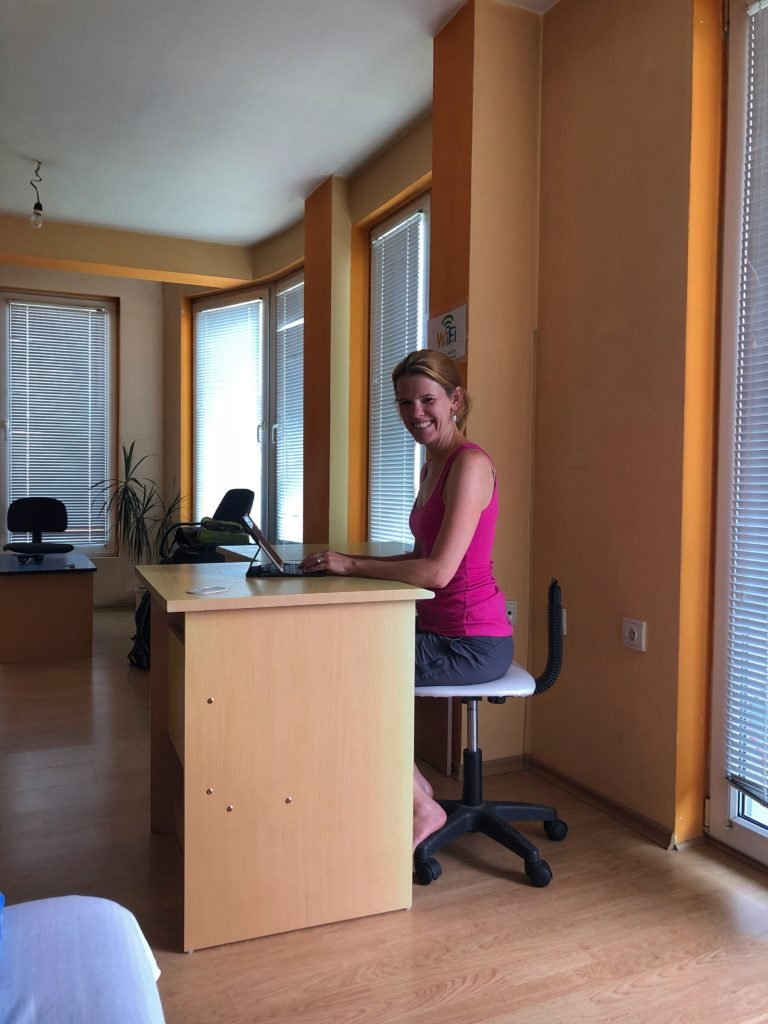
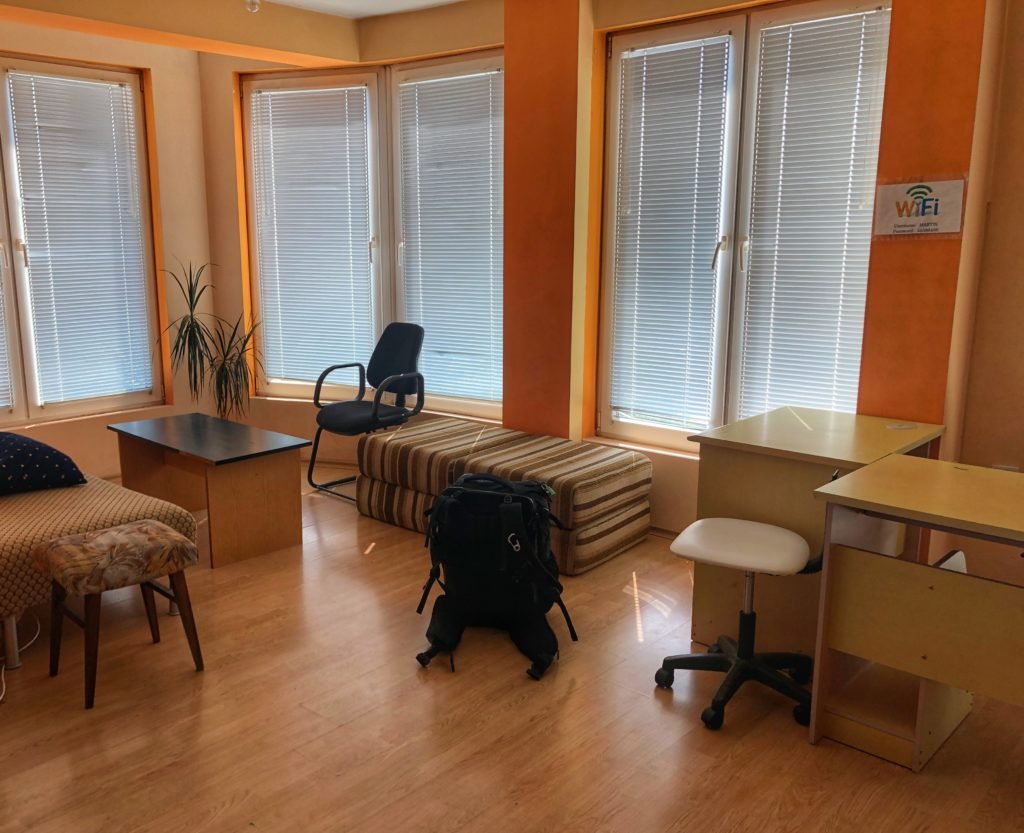
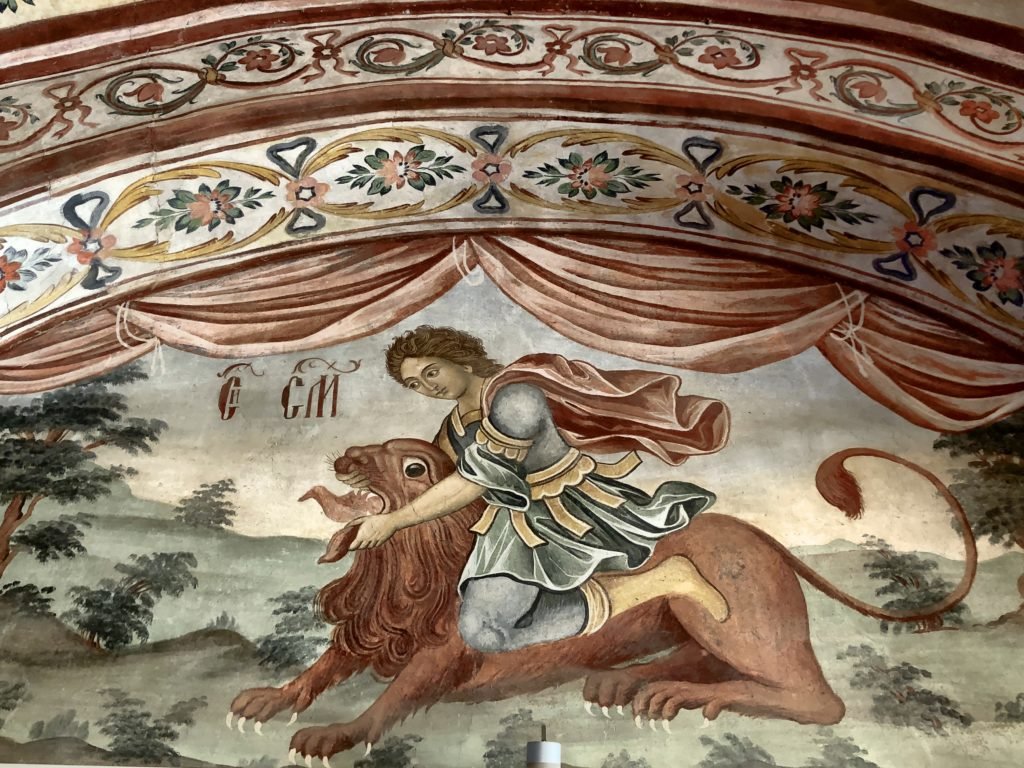
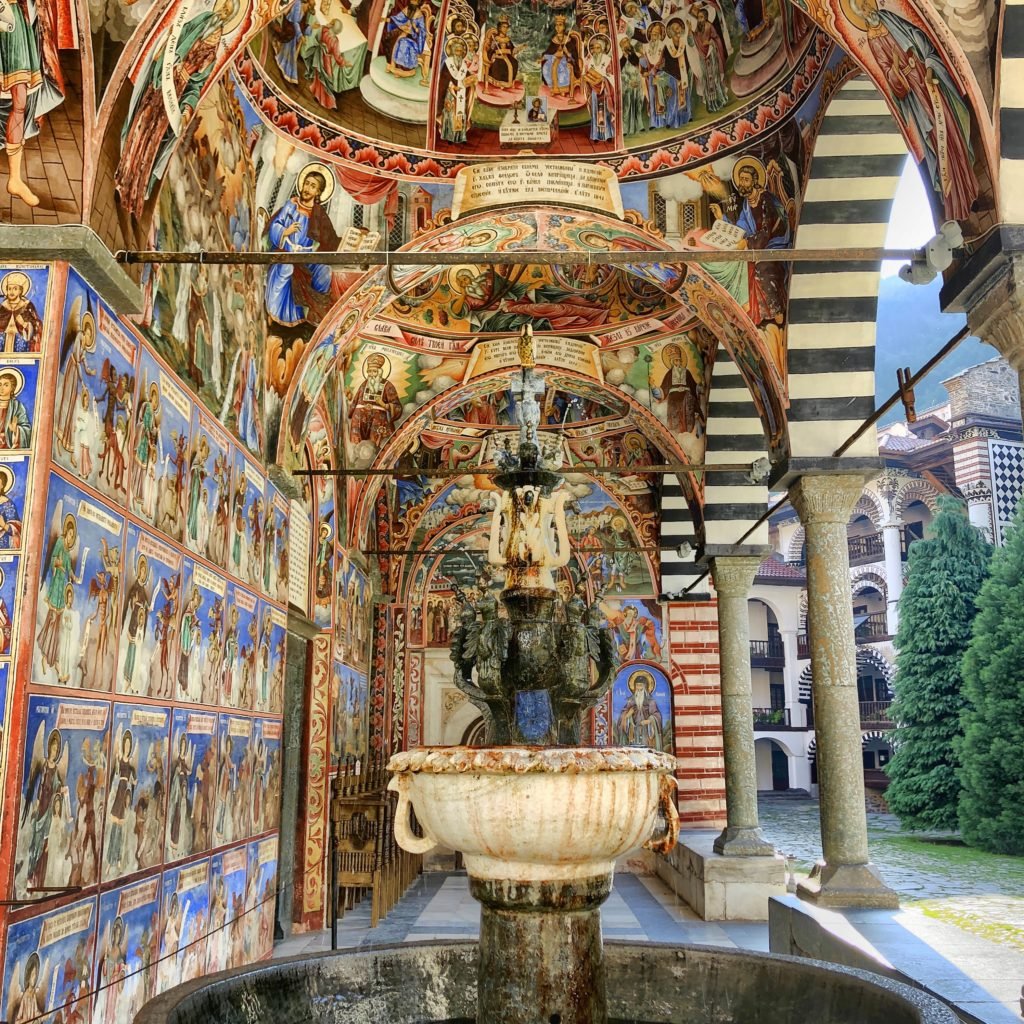
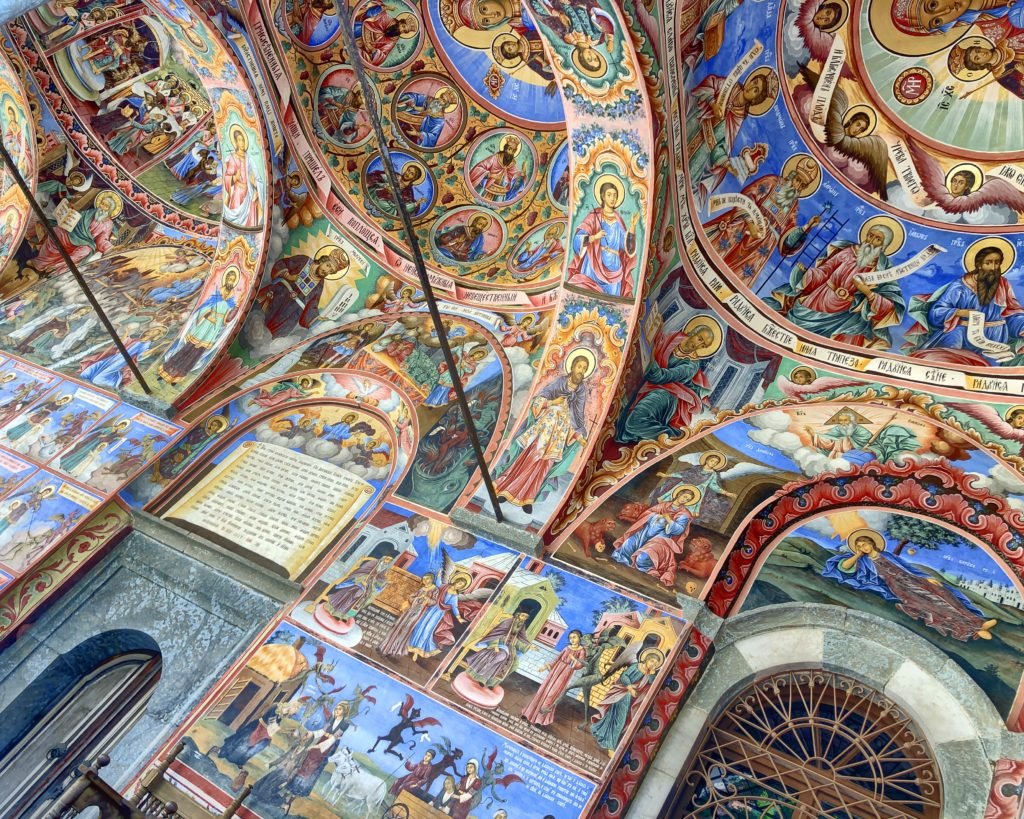
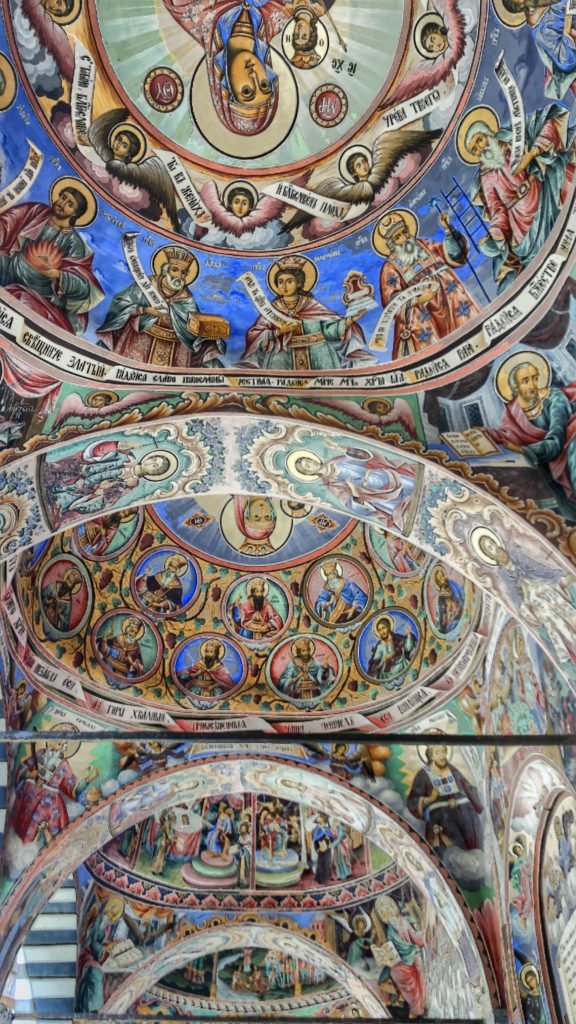
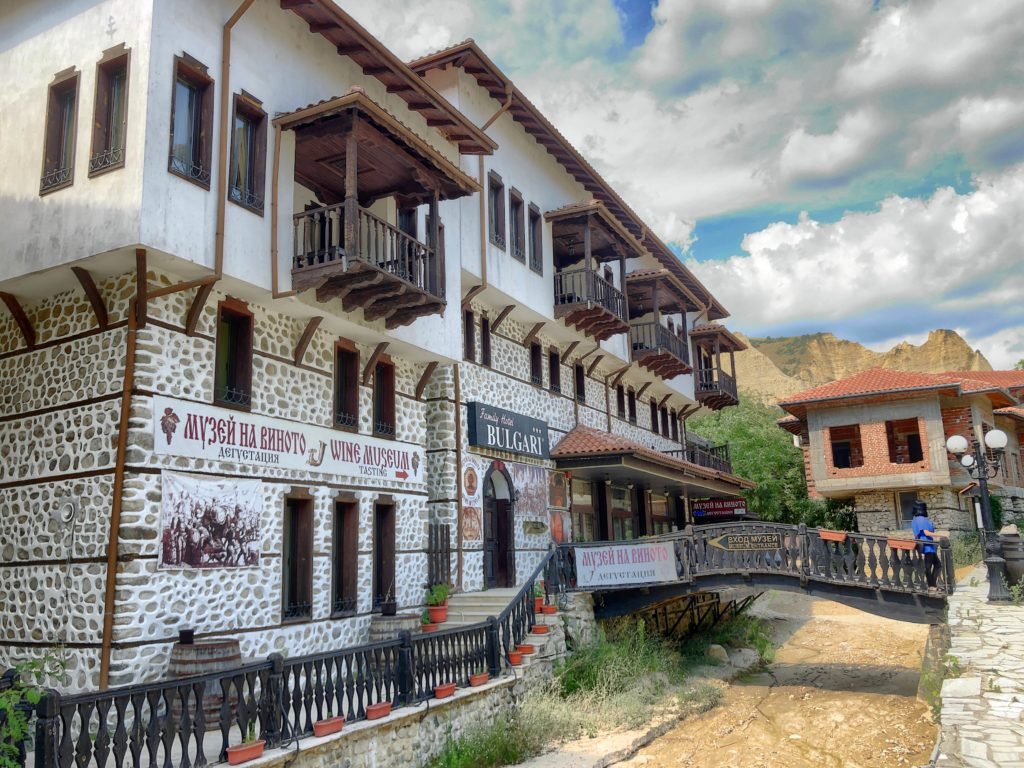
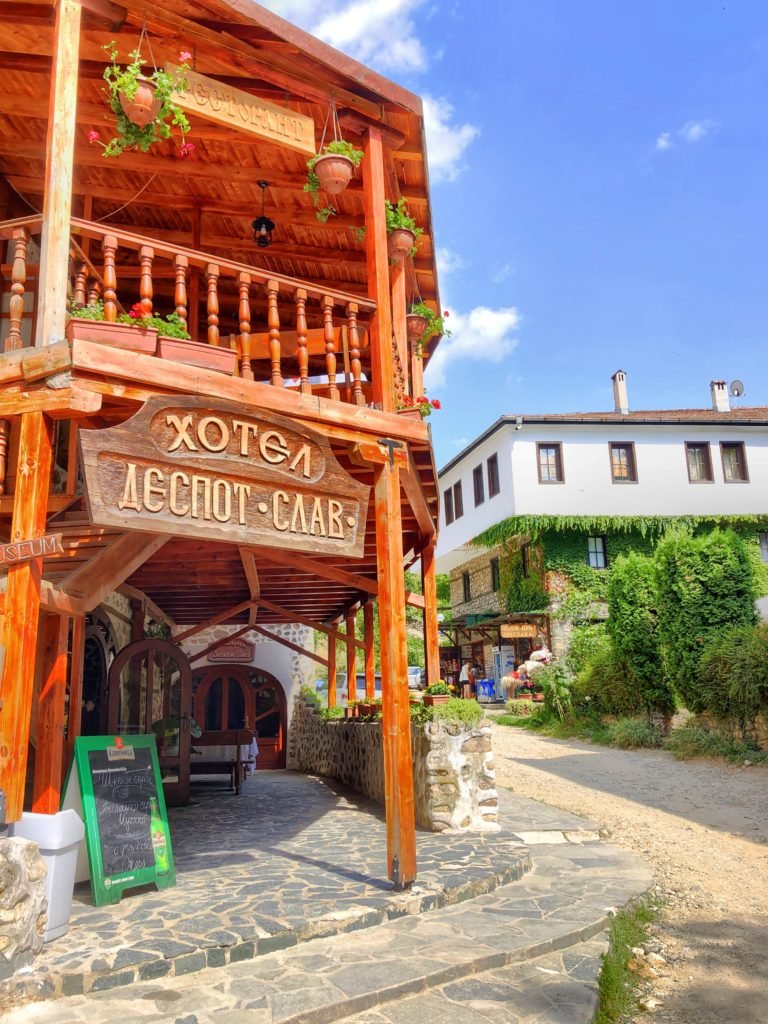
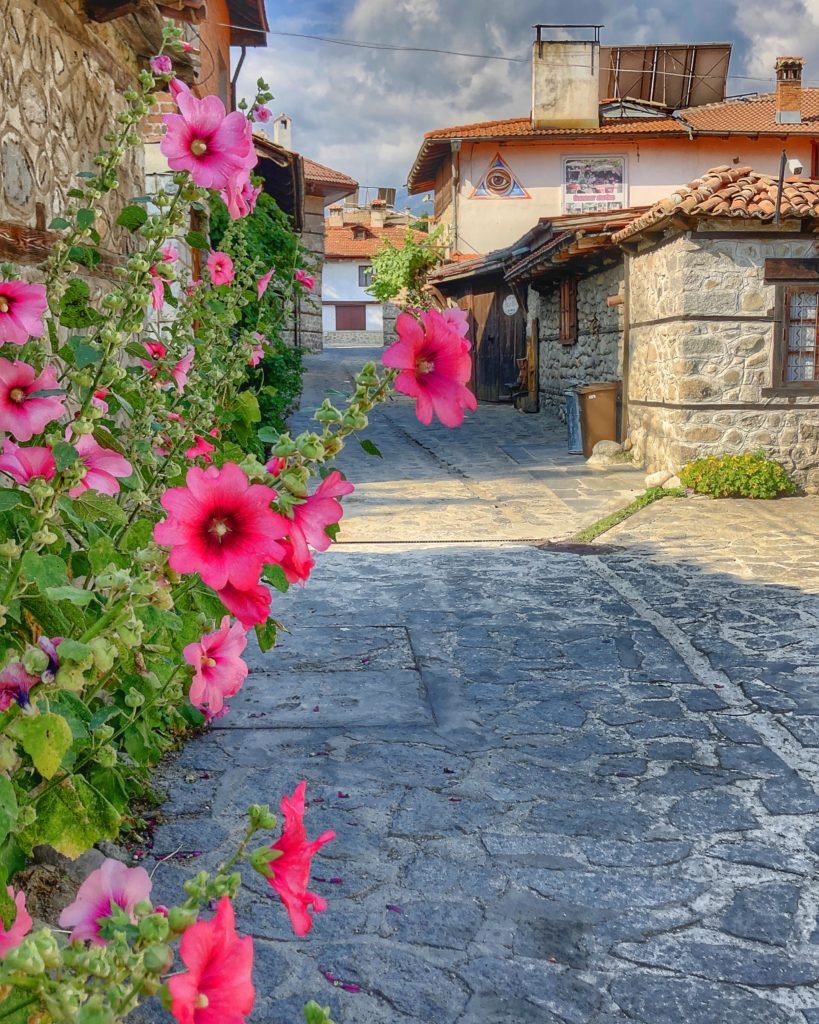
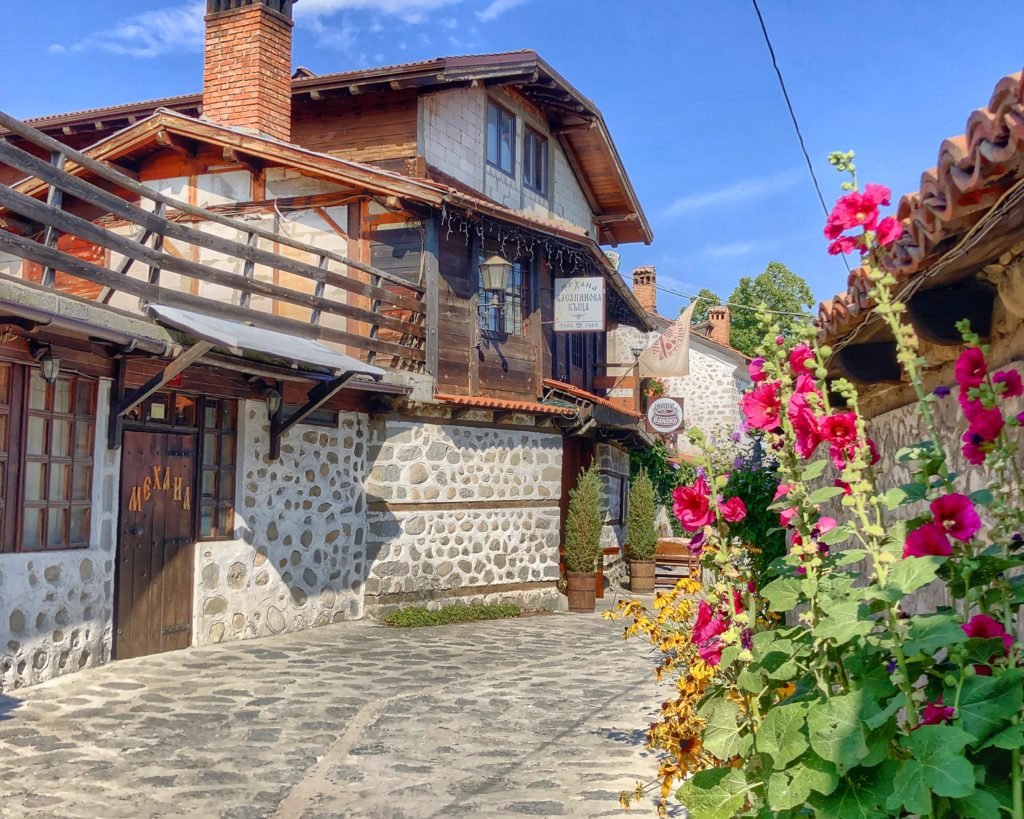
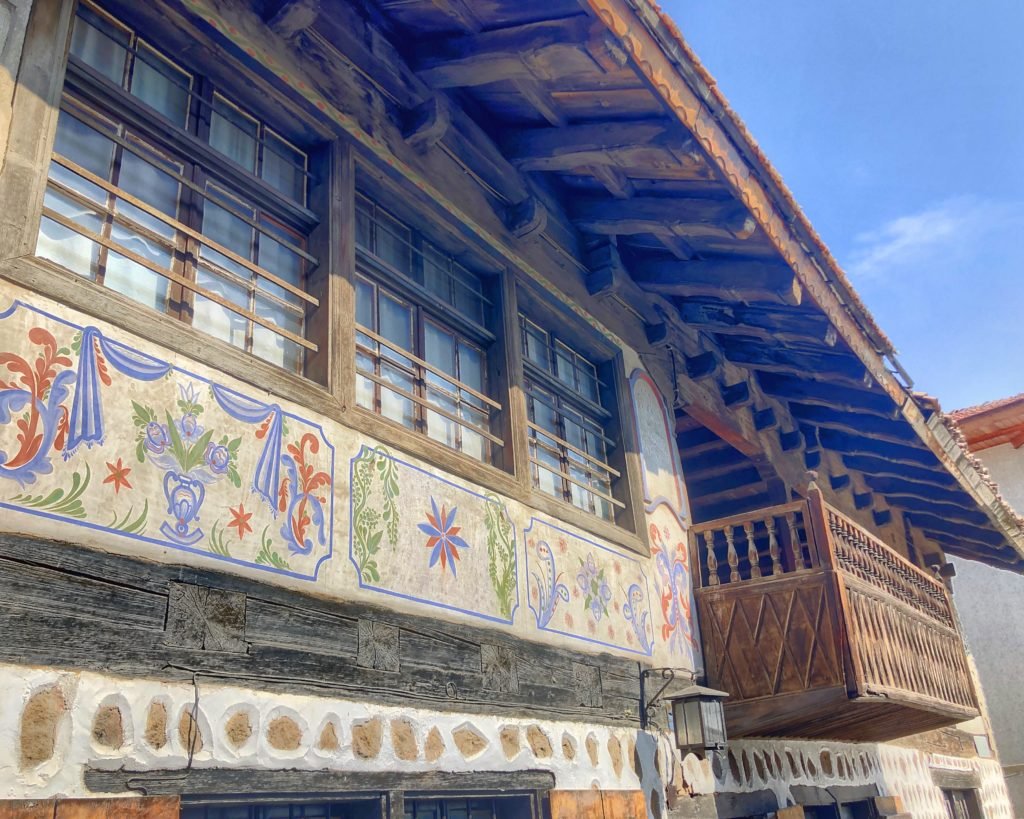

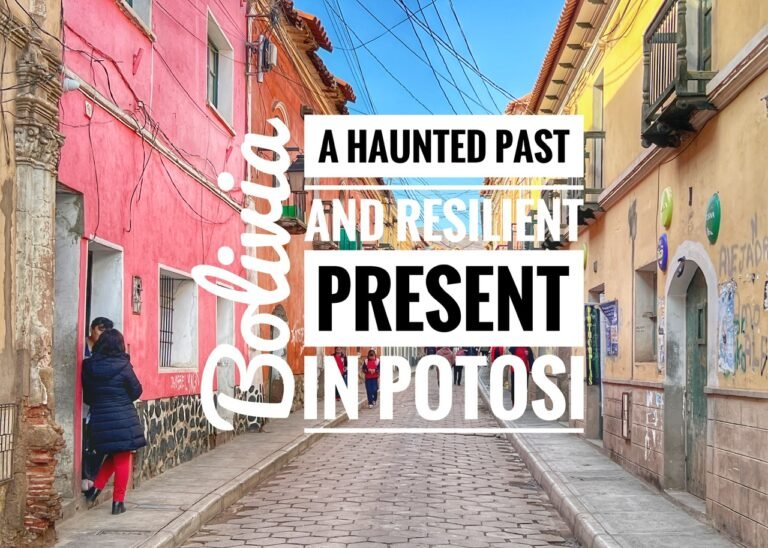
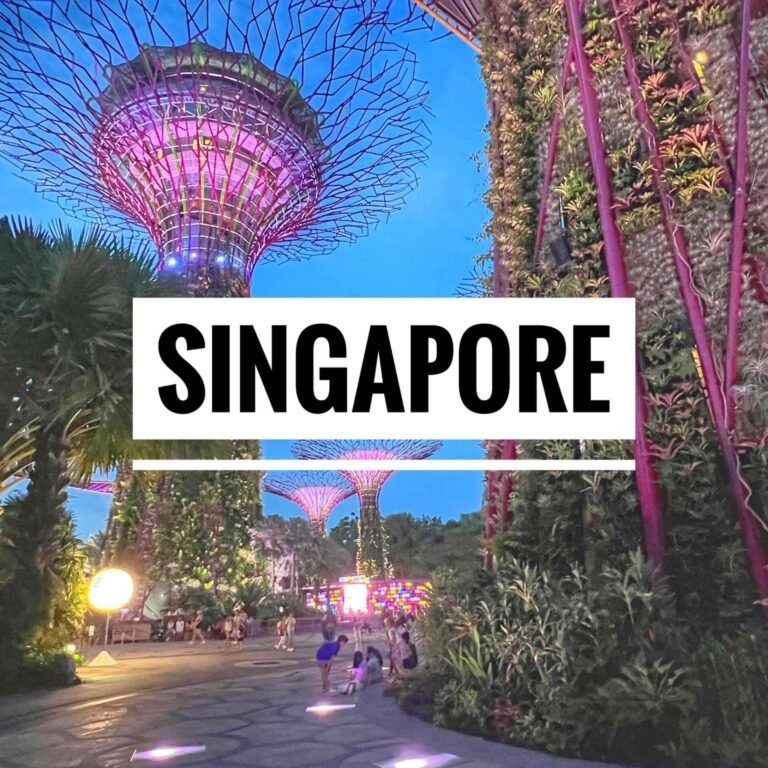
you have nice articles on bulgaria but i am quite perplexed by your paragraph on the Roma. Where did you find 12% Roma in Bulgaria? Bulgaria has about 300-400000 of that populatuon. the national census is quite reliable. many of the roma in Bulgaria speak Turkish and are muslim and often identify as Turks? I have to say as a Bulgarian I am tired of Bulgaria being identify as a country made almost exclusively of Roma!. It is incorrect and unfair. Roma can be found anywhere in Europe and they have lived there just as long. there are a few countries in Europe with little Roma population but this is because of certain events that happened during WWII.
Hello Rosi,
Thank you very much for your comment, and taking time to read our article. It’s important that we have locals share this kind of information with us, when we are inaccurate, and we appreciate it 🙂
We found it in two different sources online. One was this one (which is obviously not as reliable as the census) https://www.seeker.com/5-intriguing-facts-about-the-roma-1767975443.html, and the other, I cannot seem to find again. Regardless, I appreciate your comment very much and will modify the post accordingly. Thanks again.